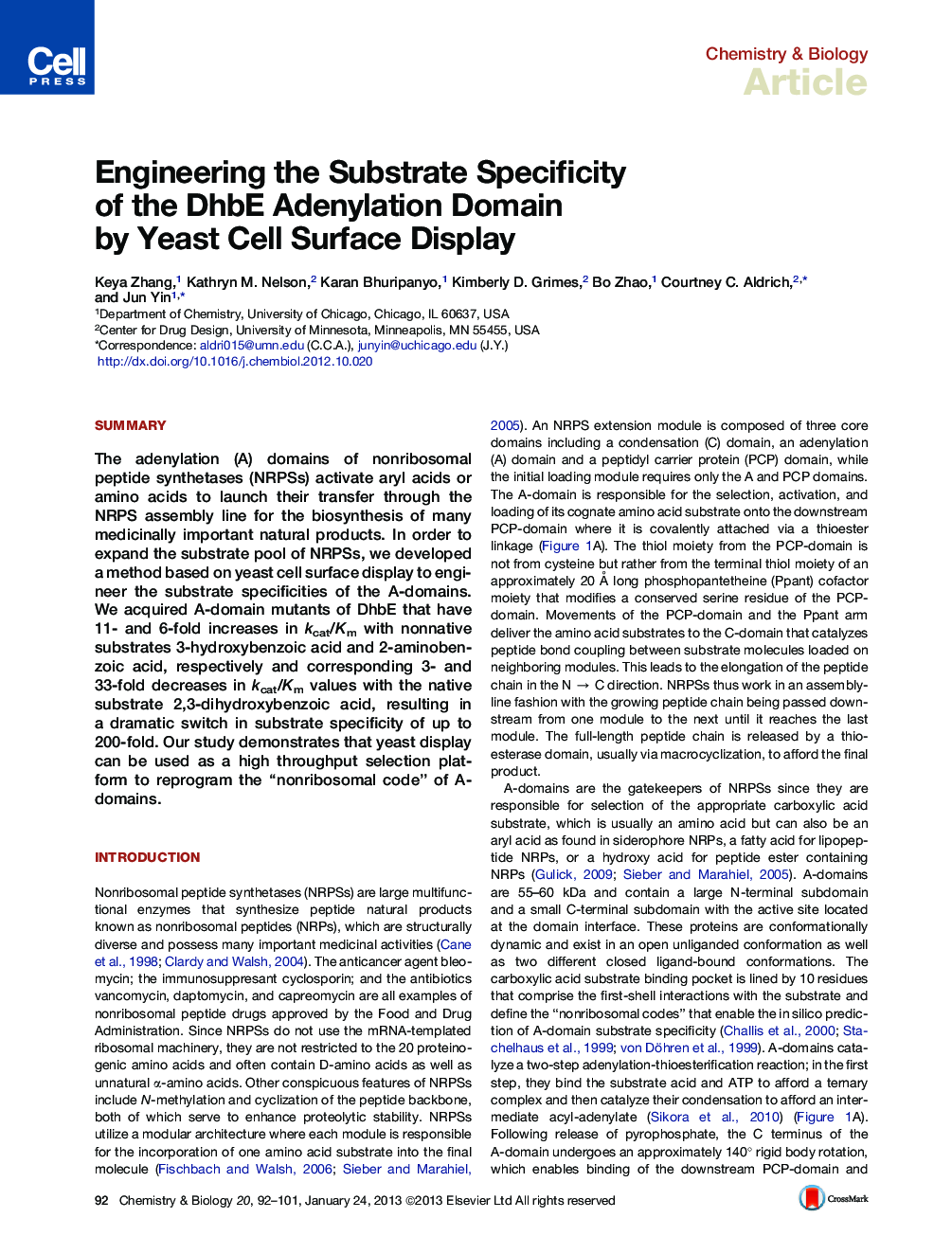| Article ID | Journal | Published Year | Pages | File Type |
|---|---|---|---|---|
| 1391228 | Chemistry & Biology | 2013 | 10 Pages |
SummaryThe adenylation (A) domains of nonribosomal peptide synthetases (NRPSs) activate aryl acids or amino acids to launch their transfer through the NRPS assembly line for the biosynthesis of many medicinally important natural products. In order to expand the substrate pool of NRPSs, we developed a method based on yeast cell surface display to engineer the substrate specificities of the A-domains. We acquired A-domain mutants of DhbE that have 11- and 6-fold increases in kcat/Km with nonnative substrates 3-hydroxybenzoic acid and 2-aminobenzoic acid, respectively and corresponding 3- and 33-fold decreases in kcat/Km values with the native substrate 2,3-dihydroxybenzoic acid, resulting in a dramatic switch in substrate specificity of up to 200-fold. Our study demonstrates that yeast display can be used as a high throughput selection platform to reprogram the “nonribosomal code” of A-domains.
Graphical AbstractFigure optionsDownload full-size imageDownload high-quality image (110 K)Download as PowerPoint slideHighlights► Yeast surface display to engineer substrate recognition of adenylation (A) domains ► Synthesis of bisubstrate inhibitors for yeast selection of A domain library ► Identifying DhbE mutants specific for 3-hydroxybenzoic acid and 2-aminobenzoic acid ► Key residues in A domain for substrate recognition and transfer
